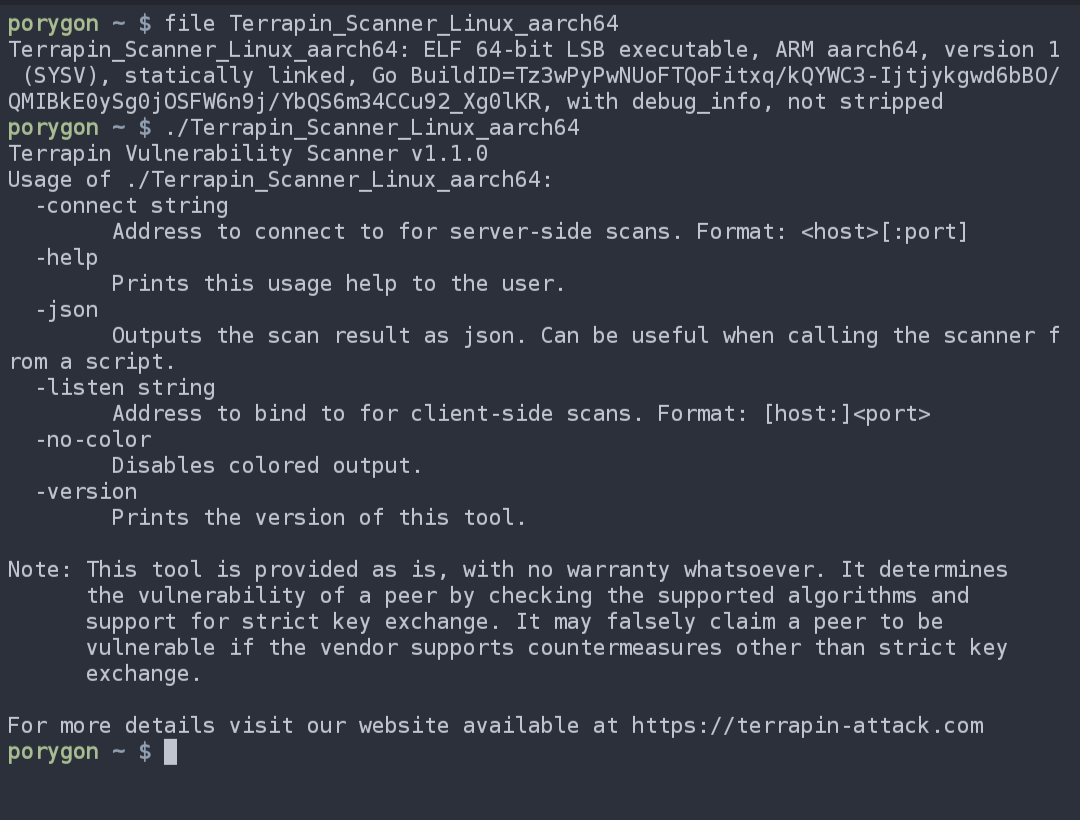Square peg, round hole:
Hacking ADOM to work on Android

When I last left off, I wrote a post about getting as many traditional roguelikes to work on Android as I could! And while I was successful in accomplishing this for a few games I eventually packaged for Termux, there was still the weirdness that was ADOM, a closed-source game that I wrote a ptrace wrapper in order to play without needing to rely on emulation.
However, it turns out that getting a version of ADOM working on Android without a wrapper not only is possible, it’s actually pretty easy!
ADOM, and the problem
ADOM is an excellent traditional roguelike created by Thomas Biskup. It features a large open world you can navigate with an overworld map, a narrative with branching storylines, and lots of other things none of the other popular roguelikes of the time had. But, unlike those other roguelikes, it also wasn’t open source.
Without source code, how is it possible to play ADOM on Android? Well, cool thing about Android, it actually does run ELF binaries when asked nicely. This usually just fails because the binaries you use on other Linuxes have two complications:
- They are for the wrong architecture
- They want to use shared libraries that do not exist on Android, and that you can’t easily install
If those two complications aren’t a problem, there’s nothing really stopping you from running programs compiled without Android in mind, right?
Well, almost, but we’ll get to that.
What this does mean is that, most statically linked ARM binaries built for Linux will just kinda…work on Android! For example, because of how it works, most Linux-ARM targeting builds of Go programs can run on most phones without modification, or any special environments.
Here’s the Terrapin Vulnerability Scanner’s aarch64 build running without modification on my phone’s shell!
With that in mind, there is a statically-linked Raspbian version of ADOM freely available on ADOM’s website; Raspberry Pi’s architecture being ARM.
This apparently ran without modification on Android once upon a time, but Android introduced seccomp filters to prevent programs from using syscalls that it doesn’t support. Syscalls ADOM wants to use.
And here lies the problem!
If ADOM calls these syscalls, it dies, but there’s no source to remove them. My previous answer to this problem was to ptrace out the syscall, but it turns out, we can do better!
Much better.
radare2 + strace
We can just hack out the system call from the binary itself! And radare2, an open source reverse engineering toolkit, that’s already installable in Termux means we can do it all on-device! We just need to figure out where the system call is in the binary so we can replicate the strategy of changing seccomp’d syscalls to syscall 0 from the previous post–except this time, not at runtime!
We don’t even need to statically analyze it to find out where we need to hack out the call, we get this information for free! We just need the kernel to seccomp kill ADOM while watching it through strace!
So, to do this, we can just install both things:
$ apt install radare2 strace
And then run ADOM through strace!
$ wget https://www.adom.de/home/download/current/adom_linux_arm_3.3.3.tar.gz
$ tar xvaf adom_linux_arm_3.3.3.tar.gz
$ cd adom
$ strace ./adom
execve("./adom", ["./adom"], 0xb400007b385d9c50 /* 42 vars */ <unfinished ...>
[ Process PID=25778 runs in 32 bit mode. ]
<... execve resumed>) = 0
uname({sysname="Linux", nodename="localhost", ...}) = 0
brk(NULL) = 0x265a000
brk(0x265ad08) = 0x265ad08
set_tls(0x265a4c0) = 0
brk(0x267bd08) = 0x267bd08
brk(0x267c000) = 0x267c000
getuid32() = 10388
setuid32(10388) = 10388
--- SIGSYS {si_signo=SIGSYS, si_code=SYS_SECCOMP, si_call_addr=0x1caf70, si_syscall=__NR_setuid32, si_arch=AUDIT_ARCH_ARM} ---
+++ killed by SIGSYS +++
Bad system call
Now, look closely at this output. Do you see what I see?
Specifically in this line:
--- SIGSYS {si_signo=SIGSYS, si_code=SYS_SECCOMP, si_call_addr=0x1caf70, si_syscall=__NR_setuid32, si_arch=AUDIT_ARCH_ARM} ---
Staring at us right in the face is the address of where the binary died to seccomp! si_call_addr=0x1caf70.
So, armed with this information, if we can simply jump to that location in the binary in radare2, and replace the syscall number with 0, we should be golden!
$ r2 -w ./adom
-w means we are allowing ourselves to write to the binary, because by default, radare2 doesn’t want you to accidentally mangle something you simply want to inspect. But after we are in, we can see r2’s extremely minimalist interface.
Since we know exactly where we want to go (0x1caf70 minus 8 because of the instruction size), we can just seek to it with
[0x0000a520]> s 0x1caf70-8
[0x001caf68]>
As you may have noticed, you can just do math inline the r2 CLI, which is nice! But now that we’re here, we may as well switch to something a little more visual!
There are two other commands we are going to use to navigate r2:
- The
Vcommand switches us to aVisual mode, and… pswitches theprint mode, which are basically just different visual mode styles (I like to think of them as pages)
We are interested in the disassembly, which is the second default print mode, so in order to do both at the same time we can just run
[0x001caf68]> Vp
This will switch to Visual mode and immediately switch to the fullscreen disassembly view, and at the top of the screen, you should be able to see:
[0x001caf68 [xAdvc]0 0% 120 ./adom]> pd $r @ entry0+1837640 # 0x1caf68
╎╎ 0x001caf68 d570a0e3 mov r7, 0xd5
╎╎ 0x001caf6c 000000ef svc 0
This is perfect! We are exactly positioned where the r7 register is getting the syscall number.
We don’t want r7 to be 0xd5, since that’s a filtered syscall and will die when we svc 0 the next instruction. So we want to zero that out by hitting i to insert hex at our location, and entering 00 (two of them because 2 hex values is 1 byte).
It should look like this after you are done:
╎╎ 0x001caf68 0070a0e3 mov r7, 0
╎╎ 0x001caf6c 000000ef svc 0
If that looks right, we will have just hacked out that syscall! All that remains is to hit ESC to leave Visual mode, and quit with q!
If you’ve done this, all you need to do to have working ADOM is to just pass in a little terminal environment, and you can play without any wrappers!
$ TERMINFO=/data/data/com.termux/files/usr/share/terminfo TERM=xterm ./adom
This is what it all looks like in one go!
Conclusion
With a tiny amount of strace and r2, any statically linked ARM ELF that dies because of seccomp on Android can be fixed!
This opens up a gigantic amount of possibilities for running things on Android that you might not have expected could otherwise–but, of course, this also means that, with the power of minor acts of hackery, we are also able to play a fun open world roguelike on the go~
(Speaking of, if you like this game, I feel like the dev would really appreciate your support on Steam!)
Happy hacking!
 The Blog of Words
The Blog of Words
